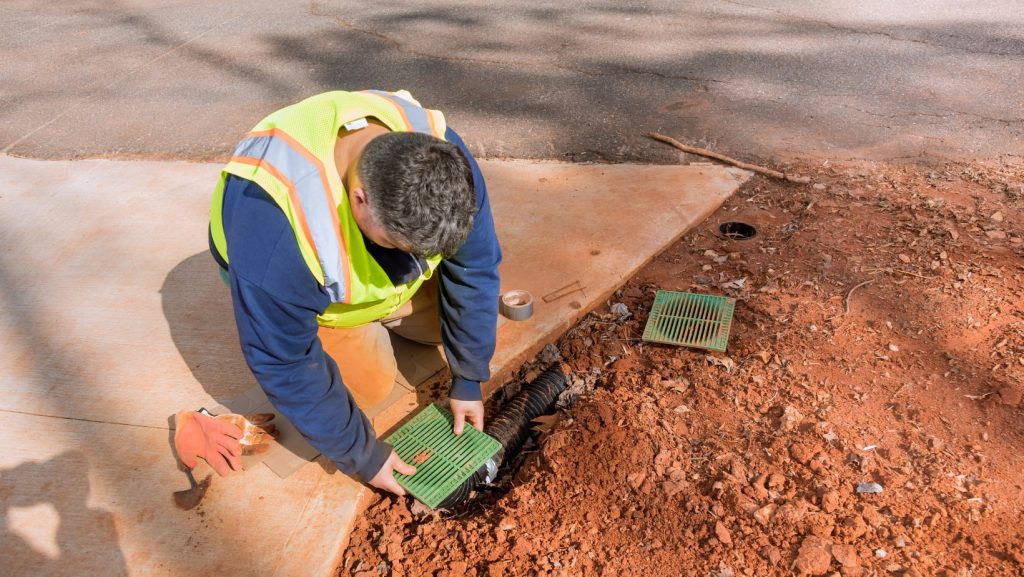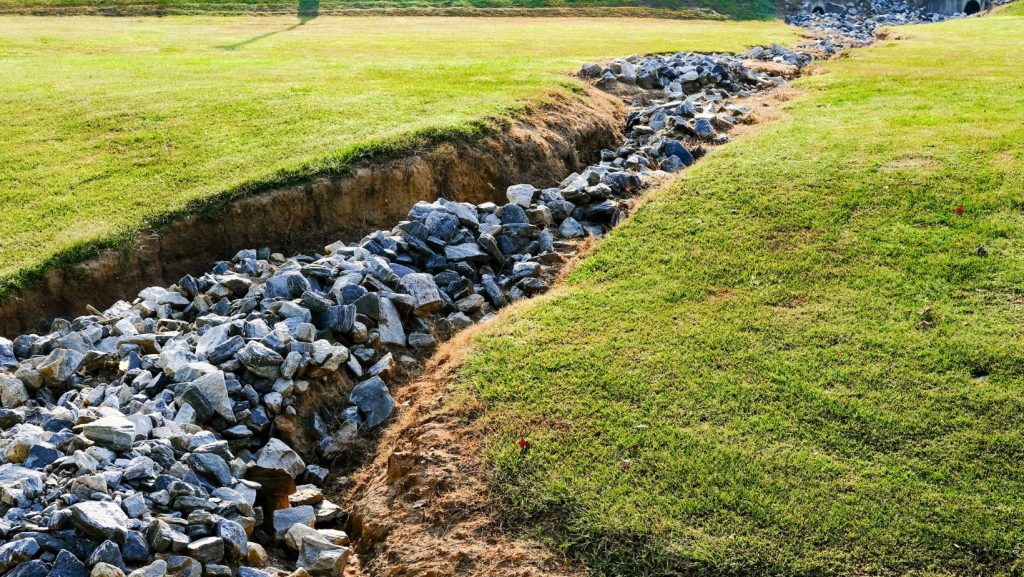Picking the correct drainage aggregate is like choosing the right incontinence pants; get it right and you won’t know they’re there, get it wrong and you’ll end up with a soggy bottom! Drainage is one of the most important considerations of any construction, civil, or landscaping project, after all the last thing you want in any new or renovated area is flooding! One of the most effective ways to manage drainage is using drainage aggregates.
What are drainage aggregates? Simply put they are aggregates that help facilitate the movement of water i.e. drainage.
In this guide, we’ll talk you through the different types of drainage aggregates and how you can pick the right one for your project based on your application.
You’ll discover the different types of material, their characteristics, and common applications, and learn how they can improve drainage and more importantly, protect you and your property. So, if you’re a landscaper, builder, or civil engineer this is the blog post for you!

A recently installed drainage system.
What do drainage aggregates do?
Drainage aggregates are materials that help improve the drainage of sub-bases and soil. They can be found in a variety of applications such as driveways and paths, drainage swales, and French drains, but how do they actually work? Well, drainage aggregates can be used to:
Reduce or prevent erosion– by controlling the flow of water drainage aggregates such as pea gravel or crushed granite can reduce or prevent erosion by reducing the speed of the water flow.
Increase drainage capacity– alternatively, drainage aggregates can be used to speed up the water flow therefore increasing the capacity of a drainage system.
Improved soil permeability– drainage aggregates such as pea gravel or limestone can be used to create more space in soil which allows water to flow through with less resistance.
Aesthetic features– drainage aggregates such as decorative gravel and limestone can also be used to improve the look of an area, such as a driveway, path, or flowerbed.
By controlling the direction and speed of water flow drainage aggregates play a key role in controlling water levels and preventing damage to landscapes and property.

A draiange swale constructed from crushed stone installed on a golf course.
What are the different types of drainage aggregates?
There are lots of different types of drainage aggregates for you to choose from, the most common ones are:
Crushed stone- highly durable and long-lasting, crushed stone provides excellent erosion protection. It is available in a range of sizes from 6 mm to 20 mm and is suitable for a wide variety of drainage applications. Most French drains use crushed stone, and it can be found in most subsurface systems.
Limestone- this is a primary aggregate that is strong, durable, and acts as an acidity neutraliser when used in soil. Typically, it is quarried, crushed then screened to sizes ranging from 10mm to 50mm. As with crushed stone, it is commonly used in French drains and in path and driveway construction.
Pea Gravel- this is probably the most common material used as a drainage aggregate, as with the other examples it is a primary aggregate available in uniform sizes from 10mm to 20mm. It is an incredibly versatile aggregate and is suitable for use in any subsurface drainage system as well as in the construction of paths, driveways, or flowerbeds.

Construction of a French drain using crushed stone.
Which one is right for you?
Each project is different, so depending on your specific needs, you may want to choose one drainage aggregate over another. But what factors do you need to consider when choosing the material to construct your drainage system? Let’s take a look at some of the more common considerations.
Application- are you building a subsurface drainage system such as a French drain, or are you looking for a surface drainage solution such as a drainage swale? For the former, a larger-sized drainage aggregate such as 20mm crushed stone would be best suited, but in the case of a drainage swale, a smaller, say 10mm pea gravel would work better.
Condition of the site- as with the application, the physical properties of the site will have a big influence on the type of drainage aggregate you choose. The main things for you to consider are the type of soil under the site and the gradient. Areas that are already prone to flooding will need a drainage aggregate that is more permeable. For sites like these crushed stone and pea gravel will perform better than limestone. Also, if the soil is acidic and you would like to neutralise it, limestone would be a better option.
Aesthetics- for landscaping projects, or the construction of driveways and paths, aesthetics can be a major consideration. Pea gravel is available in a wide variety of different shades and colours, as is crushed granite. When using aggregates for decorative purposes it’s important to consider how the material will fit in and add to the design of the overall project.
Budget- with drainage aggregates it’s important to select the correct material for your application, however, budget is still an important consideration and needs to be weighted against the overall cost of the project. Generally speaking, crushed stone and pea gravel will be more cost-effective solutions, with lava rock and river rock sitting more at the top end of the pricing scale.
In conclusion, drainage aggregates are a key component in controlling water levels and protecting property from flooding. Selecting the right one for your project is an important step with the main thing to consider being, the application, site conditions, aesthetics, and budget.
Hopefully, this guide has helped provide some clarity on the subject, if you are still unsure, contact our team today or consult with a civil engineer or drainage expert.
